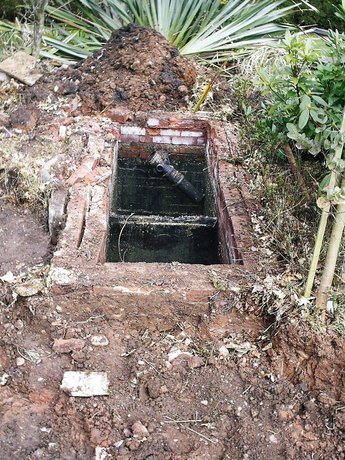Septic Tank
A septic reservoir is the main component in a small-scale sewage system that works with no link with the primary sewage pipes provided in most locations and small cities, and is also common in New Zealand's more remote areas. The term ‘septic' identifies the anaerobic bacterial environment that grows in the container as the waste products discharged involved with it from the toilet and household sinks and basins decomposes. The container is connected to a septic drain field, ponds or other filtering systems to dispose of the liquid effluent it produces. By respecting the regulatory provisions, you donate to the promotion of your public health and the safeguard of the environment. To offer an exact notion of its size, it is large enough to carry a couch or single bed. Your can expand the life of your septic container by enjoying what switches into it. This implies NO food scraps, sands, gravel, greases, oils etc. Beware of chemicals and solvents that will get rid of the helpful bacterias in your container.
At RECORD SEPTIC Fish tank LOCATION we illustrate the procedure to make those measurements and the required sketch. Take a few of these steps if your septic reservoir continually shows problems or is clearly in full failure mode. Within 10-20 feet from the building. During building building it is often convenient to excavate for both basis and the septic container hole at the same time. And keeping the reservoir close (however, not too close) to the structure saves on domestic plumbing costs.
Distribution Box - a tank-like pack with as many stores as pipes in the disposal field. The effluent flows into the package and through different outlet stores to the disposal field. It's important that the syndication field be level because this system relies on gravity to ensure even flow circulation to all outlets. Distribution boxes are easy to inspect and some shops can be blocked to give certain trenches a rest.
By placing the plumbing related snake into the key building drain and pushing it until it ceases lifeless, the snake end has usually hit the septic fish tank inlet baffle. Out of this procedure we know the utmost distance from the building drain to the septic fish tank. We say maximum distance because we have no idea for sure that the drain line runs right to the tank.
The sludge at your tank's bottom level requires regular septic cleaning or pumping. Even the best bacterias can't fully breakdown all organic material, meaning it'll start to build-up and take more of the tank's space. If there's not enough room for drinking water, the sludge will start to backup into leach field, your home's pipes or could cause a tank failure.
At RECORD SEPTIC Fish tank LOCATION we illustrate the procedure to make those measurements and the required sketch. Take a few of these steps if your septic reservoir continually shows problems or is clearly in full failure mode. Within 10-20 feet from the building. During building building it is often convenient to excavate for both basis and the septic container hole at the same time. And keeping the reservoir close (however, not too close) to the structure saves on domestic plumbing costs.
Distribution Box - a tank-like pack with as many stores as pipes in the disposal field. The effluent flows into the package and through different outlet stores to the disposal field. It's important that the syndication field be level because this system relies on gravity to ensure even flow circulation to all outlets. Distribution boxes are easy to inspect and some shops can be blocked to give certain trenches a rest.

By placing the plumbing related snake into the key building drain and pushing it until it ceases lifeless, the snake end has usually hit the septic fish tank inlet baffle. Out of this procedure we know the utmost distance from the building drain to the septic fish tank. We say maximum distance because we have no idea for sure that the drain line runs right to the tank.
The sludge at your tank's bottom level requires regular septic cleaning or pumping. Even the best bacterias can't fully breakdown all organic material, meaning it'll start to build-up and take more of the tank's space. If there's not enough room for drinking water, the sludge will start to backup into leach field, your home's pipes or could cause a tank failure.